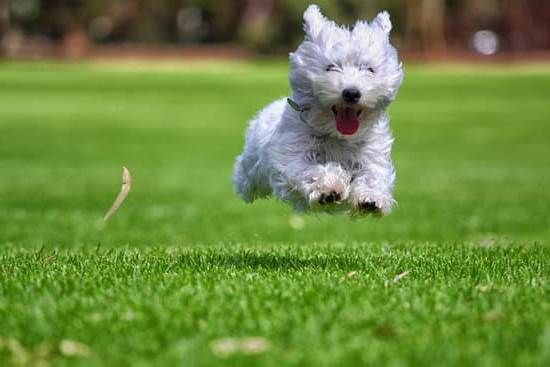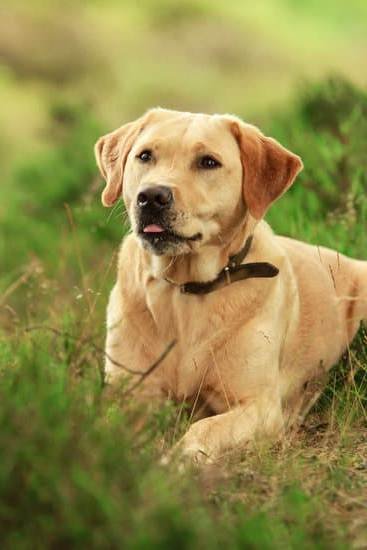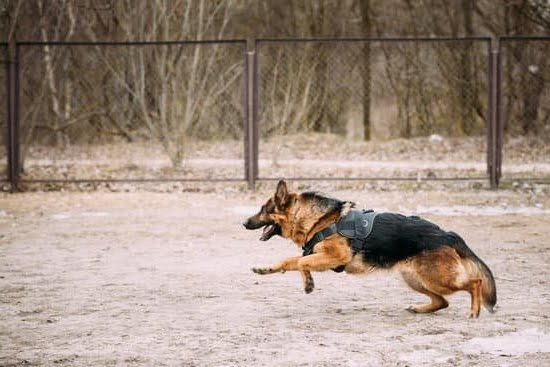Training a dog to walk on a leash is an essential skill for both the safety of your furry friend and the enjoyment of daily walks. By teaching your dog proper leash manners, you can prevent pulling, lunging, and other unwanted behaviors that can make walks stressful and unpleasant.
In this article, we will explore the importance of leash training and provide you with a step-by-step guide to help you train your dog to walk calmly and obediently by your side.
When it comes to walking on a leash, it is crucial for dogs to understand that the person holding the other end of the leash is in control. Leash training teaches dogs to respect boundaries, follow commands, and stay focused even in distracting environments. By mastering this critical skill, not only will you have more control over your pet’s behavior during walks, but you will also build a stronger bond with your furry companion.
Understanding the basics of leash training is the first step towards success. In this article, we will delve into various techniques and methods that can be used to teach your dog how to properly walk on a leash. We will discuss how different leashes and collars can impact training outcomes and provide guidance on selecting the right equipment for your specific needs.
So whether you have a young pup or an older dog who needs some remedial training, join us on this journey as we explore everything you need to know about training a dog to walk on a leash. With patience, consistency, and positive reinforcement techniques at hand, you’ll soon be enjoying stress-free walks with your well-behaved canine companion.
Understanding the Basics of Leash Training
Leash training is an essential skill for any dog owner. Not only does it ensure the safety and well-being of your dog, but it also allows for enjoyable walks and outings together. Understanding the basics of leash training is crucial before embarking on this journey with your furry friend.
Benefits of Leash Training
There are numerous benefits to leash training your dog. Firstly, it provides you with control and ensures the safety of your dog in public spaces. By keeping them on a leash, you can prevent them from running into potentially dangerous situations or getting lost. Leash training also allows for better communication between you and your dog, establishing you as the leader and promoting obedience.
Furthermore, leash training promotes good behavior in dogs. When properly trained on a leash, they are less likely to pull or lunge at people, animals, or objects during walks. This makes outings more pleasant for both you and your pet.
Creating a Positive Association
Before starting formal leash training, it’s important to create a positive association with wearing a collar and being on a leash. Begin by letting your dog sniff and investigate the collar and leash without any pressure or tension.
Gradually introduce the collar by putting it around their neck for short periods while providing treats or rewards. Once they are comfortable with the collar, attach the leash but allow them to roam freely indoors so they can get used to the sensation without pulling or resistance.
Next, practice having your dog follow you around while holding onto the end of the leash inside your home or backyard. Use treats and praise to reward them for staying by your side and not pulling on the leash. This helps establish a positive connection between being on a leash and receiving rewards.
By understanding these basics of leash training and creating positive associations, you will lay a solid foundation for successful training sessions with your dog.
Choosing the Right Leash and Collar for Your Dog
Considering Your Dog’s Size and Strength
When it comes to choosing the right leash and collar for your dog, it is essential to consider their size and strength. A leash that is too long or too short can be uncomfortable for both you and your dog, while a collar that is too loose or too tight can cause discomfort or even injury.
For smaller dogs, a lightweight and shorter leash may be more suitable, as they require less control. On the other hand, larger and stronger dogs may require a stronger leash made of durable materials such as nylon or leather. Additionally, adjustable leashes can provide versatility in length to accommodate different training situations.
The Importance of Choosing the Right Collar
The type of collar you choose plays a significant role in ensuring your dog’s comfort and safety during leash training. Some common types of collars include flat collars, martingale collars, harnesses, head halters, choke chains, and prong collars. It is crucial to select a collar based on your dog’s behavior, breed characteristics, and individual needs.
Flat collars are commonly used for everyday walking but are not recommended for dogs prone to pulling or lunging. Martingale collars offer more control without choking your dog by tightening when necessary but releasing pressure when they are relaxed. Harnesses are an excellent option for dogs prone to neck injuries or those with respiratory issues.
Consulting with a Professional
If you are unsure about which leash or collar would best suit your dog’s needs, consulting with a professional dog trainer or veterinarian can provide valuable guidance. They will consider factors such as breed-specific needs, behavioral problems, and physical limitations when recommending the most suitable equipment for your dog.
Remember that every dog is unique, so what works well for one may not work for another. It may take some trial and error before finding the right leash and collar combination that both you and your dog are comfortable with. Taking the time to choose the right equipment will pave the way for successful leash training and enjoyable walks together.
Preparing Your Dog for Leash Training
Before beginning leash training, it is important to ensure that your dog is prepared for the process. By taking the time to properly prepare them, you can set them up for success and make the training experience more positive and effective.
Firstly, it is crucial to ensure that your dog has basic obedience skills and understands fundamental commands such as “sit,” “stay,” and “come”. These commands will be essential during leash training as they establish a foundation of communication between you and your dog.
Additionally, you should accustom your dog to wearing a collar or harness. Start by allowing them to wear it indoors for short periods of time, gradually increasing the duration. This will help your dog associate the collar or harness with positive experiences rather than feeling restricted or uncomfortable.
It is also recommended to introduce your dog to the concept of walking on a loose leash before beginning formal leash training. You can do this by attaching a leash to their collar or harness while allowing them to roam freely in a controlled environment.
Gradually begin holding onto the leash while letting it drag behind them, ensuring that they are not tugging on it. Through this process, they will become accustomed to the sensation of having something attached to their collar or harness.
By taking these steps to prepare your dog for leash training, you can help make the process smoother and more successful. Remember that patience and consistency are key when working with dogs, so give your pet plenty of time to adjust and always use positive reinforcement techniques throughout their training journey.
Step-by-Step Guide
Teaching your dog to walk on a leash is an important skill that every dog owner should master. Not only does it ensure the safety of both you and your furry friend, but it also allows for enjoyable and stress-free walks. In this step-by-step guide, we will break down the process of leash training into easy-to-follow steps.
- Start indoors: Begin by introducing your dog to the concept of wearing a collar or harness and having the leash attached. Allow them to get used to the feeling before moving on to actual walking. Use treats and positive reinforcement to make this a positive experience for your dog.
- Practice in a distraction-free environment: Choose a quiet, familiar location such as your backyard or a quiet park to practice leash training. Keep distractions minimal at first so that your dog can focus on learning without being overwhelmed.
- The power of treats: Use treats as motivation during training sessions. Hold a treat at your dog’s nose level, say their name followed by “heel,” and start walking forward slowly. Encourage them to follow you by keeping the treat close to their nose.
- Positive reinforcement: Whenever your dog successfully walks beside you without pulling or lunging, reward them with praise and treats. This will reinforce the desired behavior and motivate them to continue doing so in future walks.
- Gradual progression: As your dog becomes more comfortable walking on a leash, gradually increase the difficulty level by introducing mild distractions such as other dogs or squirrels nearby. Practice patience and continue rewarding good behavior.
- Consistency is key: Consistency is crucial for successful leash training. Make sure everyone who walks your dog uses the same techniques and commands to avoid confusion for your furry friend.
- 7.Communicate effectively with body language: Dogs are highly observant creatures that can pick up cues from our body language. Stand tall, maintain good posture, and project confidence while walking with your dog. This will help to establish your leadership and makes it easier for your dog to understand what behavior is expected of them.
By following this step-by-step guide, you can effectively train your dog to walk on a leash. Remember to be patient, use positive reinforcement, and maintain consistency throughout the training process. With time and dedication, you will be able to enjoy many peaceful walks with your well-behaved companion.
Common Challenges and Solutions in Leash Training
Leash training can present several challenges for both dogs and their owners. It is essential to address these difficulties to ensure a successful training experience and enjoyable walks with your furry friend. In this section, we will discuss some common challenges that arise during leash training and provide effective solutions to overcome them.
One of the most prevalent challenges in leash training is pulling. Many dogs naturally want to explore their environment, leading them to pull on the leash. While this behavior might seem harmless, it can make walks frustrating and uncomfortable for both you and your dog.
To address pulling, it’s crucial to teach your dog proper leash manners. Start by using a no-pull harness or head collar, which provides better control over your dog’s movements. Additionally, practice loose-leash walking exercises regularly, rewarding your dog for walking calmly by your side.
Another challenge that may arise during leash training is lunging or reacting aggressively towards other dogs or people. This behavior can be driven by fear, anxiety, territorial instincts, or a desire to play. It is important to address this issue promptly as it can create dangerous situations and strain on the leash.
To tackle lunging or reactivity, consider seeking professional help from a certified dog trainer who uses positive reinforcement techniques. They can guide you in desensitizing your dog through gradual exposure to stimuli while rewarding calm behavior.
Leash reactivity is another common challenge faced during leash training. This occurs when a dog becomes overly excited or frustrated when they see other dogs while on a leash. This can cause barking, lunging, or aggressive behavior towards other dogs. To overcome leash reactivity, implement counter-conditioning techniques such as rewarding calm behavior and redirecting their attention away from the trigger stimulus.
| Challenge | Solution |
|---|---|
| Pulling | Use a no-pull harness or head collar, practice loose-leash walking exercises, reward for calm walking |
| Lunging or Reactivity | Seek professional help, desensitize through gradual exposure and positive reinforcement |
| Leash Reactivity | Implement counter-conditioning techniques, reward calm behavior, redirect attention away from triggers |
Reinforcing Good Behavior
Positive reinforcement is a highly effective technique when it comes to training dogs to walk on a leash. This approach involves rewarding your dog for exhibiting desirable behavior, such as walking calmly beside you without pulling or lunging. By using positive reinforcement techniques, you can motivate your dog to continue performing the desired behavior and create a strong bond between you and your furry friend.
One important aspect of positive reinforcement is timing. It’s crucial to provide the reward immediately after your dog displays the desired behavior. This helps them associate the reward with their actions and reinforces the connection between the two. Rewards can come in various forms, such as treats, praise, or playtime with their favorite toy. Choose a reward that your dog finds highly motivating and use it consistently during training sessions.
Another effective technique is clicker training. A clicker is a small device that makes a distinct clicking sound when pressed. By pairing this sound with rewards, you can signal to your dog that they have done something correctly.
Clicker training enables precise timing since the clicker provides an instant marking of good behavior. Begin by associating the clicker with rewards through simple exercises like clicking and treating multiple times in quick succession. Once your dog understands this association, you can use the clicker as an immediate signal for desired behavior during leash training.
It’s essential to be consistent when using positive reinforcement techniques. Consistency means rewarding your dog every time they exhibit the desired behavior, especially in the early stages of leash training. Gradually reduce the frequency of rewards over time but continue to give occasional reinforcements to maintain their motivation and solidify their learning. Additionally, consistency includes using consistent cues or commands during training sessions so that your dog learns to associate those cues with specific actions.
By using positive reinforcement techniques consistently and effectively, you can reinforce good behavior in your dog and make leash training a positive experience for both of you. Through rewards, timely feedback using tools like clickers, and consistent training methods, you can foster a strong bond with your dog and ensure long-term success in leash training.
Troubleshooting
Leash training can sometimes be a challenging process, especially when dealing with pulling, lunging, and leash reactivity. These behaviors can make walks stressful and difficult for both you and your dog. However, with patience, consistency, and the right techniques, these issues can be effectively addressed.
One common challenge in leash training is pulling. Many dogs naturally want to explore their surroundings and may pull on the leash to reach something of interest. To address this issue, it’s important to teach your dog the concept of loose leash walking. Start by using a front-clip harness or a head collar to give you more control over your dog’s movements.
When your dog starts to pull on the leash, immediately stop walking and wait for them to return to your side. Once they do, reward them with praise or a treat. Repeat this process consistently so that your dog learns that pulling results in no forward progress.
Another issue that may arise during leash training is lunging. This behavior often occurs when dogs see something they want to chase or approach. It’s crucial to address this behavior early on as it can be dangerous for both your dog and other animals or people nearby.
One effective technique is redirection. When you see your dog becoming fixated on something while on the leash, redirect their attention back to you by using a cue such as “look” or “watch me,” followed by a treat or praise when they respond appropriately.
Leash reactivity is another problem that many dog owners face during walks. This behavior is characterized by barking, growling, or aggressive displays towards other dogs or people while on the leash. It’s important to understand that leash reactivity often stems from fear or frustration.
To manage this behavior, start by increasing the distance between your dog and triggers that trigger their reactivity until they are more relaxed and calm. Use positive reinforcement techniques such as treats or praise to reward your dog when they remain calm in the presence of triggers. Gradually decrease the distance over time as your dog becomes more comfortable and better able to handle these situations.
By addressing these common challenges in leash training, you can help your dog become a well-behaved walking companion. Remember, consistency, patience, and positive reinforcement are key to success. With time and effort, you can enjoy stress-free walks with your canine companion.
Tips for Consistency and Long-term Success in Leash Training
Consistency is key when it comes to leash training your dog. It is important to establish a routine and stick to it in order for your dog to understand what is expected of them during walks. Here are some tips for maintaining consistency and achieving long-term success in leash training.
Firstly, make sure to use the same commands and cues consistently throughout the training process. For example, if you use the command “heel” to indicate that your dog should walk beside you, continue using this command consistently every time you want your dog to walk by your side. This will help your dog associate the command with the desired behavior and reinforce their understanding of what is expected.
In addition to consistent commands, it is also important to be consistent with your expectations for your dog’s behavior while on leash. Make sure that everyone in the household agrees on what behaviors are acceptable and what behaviors are not. Consistently enforcing these expectations will prevent confusion for your dog and reinforce good behavior.
Another tip for consistency is to set aside specific times each day for leash training sessions. By establishing a regular training schedule, you can ensure that your dog receives consistent practice and reinforcement of their leash walking skills. Aim for short, frequent training sessions rather than one long session, as this will help keep both you and your dog engaged and focused.
Lastly, it is important to be patient and give your dog time to learn and adjust during the leash training process. Remember that each dog learns at their own pace, so be prepared for progress to vary between individual dogs. Stay consistent in applying positive reinforcement techniques such as rewards or praise when your dog displays desired behaviors on the leash.
By following these tips for consistency in leash training, you can set yourself up for long-term success. Remember that building a strong foundation through consistency will ultimately lead to stress-free walks with your well-behaved dog.
Conclusion
In conclusion, training your dog to walk on a leash is essential for both their safety and your peace of mind. By understanding the basics of leash training, choosing the right equipment, and following a step-by-step guide, you can ensure that your dog becomes well-behaved and comfortable on walks. While there may be common challenges along the way, positive reinforcement techniques can help reinforce good behavior and address any issues that arise.
Consistency is key in leash training. By consistently implementing the techniques outlined in this article, you can set your dog up for long-term success. Remember to be patient and understanding with your furry friend as they learn to navigate the world on a leash.
Once your dog has mastered walking on a leash without pulling or lunging, you can start enjoying stress-free walks together. It’s important to remember that every dog is unique and may require different approaches or additional training throughout their lifetime. However, armed with the knowledge and techniques provided here, you have the tools to handle any challenges that may arise.
So grab the right leash and collar, prepare your dog for training, and follow our step-by-step guide. With consistency, patience, and positive reinforcement, you’ll soon be enjoying peaceful walks with your well-behaved canine companion. Happy walking.
Frequently Asked Questions
How do you train a dog to walk on a leash beside you?
Training a dog to walk on a leash beside you involves patience, consistency, and positive reinforcement. Start by introducing the leash gradually, allowing the dog to sniff and explore it before attaching it to their collar or harness. Begin in a low-distraction environment and use treats or rewards to encourage them to walk alongside you.
Hold the leash loosely but be prepared to gently redirect them if they veer off course. Use verbal cues such as “heel” and reward them whenever they respond correctly. Gradually increase the difficulty by practicing in different environments with distractions, always reinforcing good behavior and ignoring pulling or lunging.
How do I get my dog to stop pulling on leash and walk?
To address a dog’s pulling behavior on a leash, consistent training using positive reinforcement techniques is necessary. Start by ensuring your dog has mastered basic obedience commands like sit and stay, which will provide a foundation for leash walking. Teach them that pulling does not lead to forward movement by stopping whenever they pull and only continuing when there is slack in the leash.
Encourage them to focus on you during walks with treats or toys as distractions. Utilize alternative methods like redirection with toys or treats for attention-seeking behaviors, as well as ensuring your dog gets regular exercise to reduce excess energy.
How long does it take to train a dog to walk on a leash?
The duration required for training a dog to walk on a leash can vary depending on various factors, including the individual dog’s temperament, age, prior training experiences, consistency of training efforts, and owner’s dedication. While some dogs may catch on quickly within a few weeks of consistent training sessions, others might take longer due to stubbornness or other behavioral issues that need addressing first.
It is important not to rush the process and be patient with your furry friend throughout their learning journey. Consistency in training and practicing regularly will contribute greatly to achieving reliable leash walking skills over time.

Welcome to the blog! I am a professional dog trainer and have been working with dogs for many years. In this blog, I will be discussing various topics related to dog training, including tips, tricks, and advice. I hope you find this information helpful and informative. Thanks for reading!





